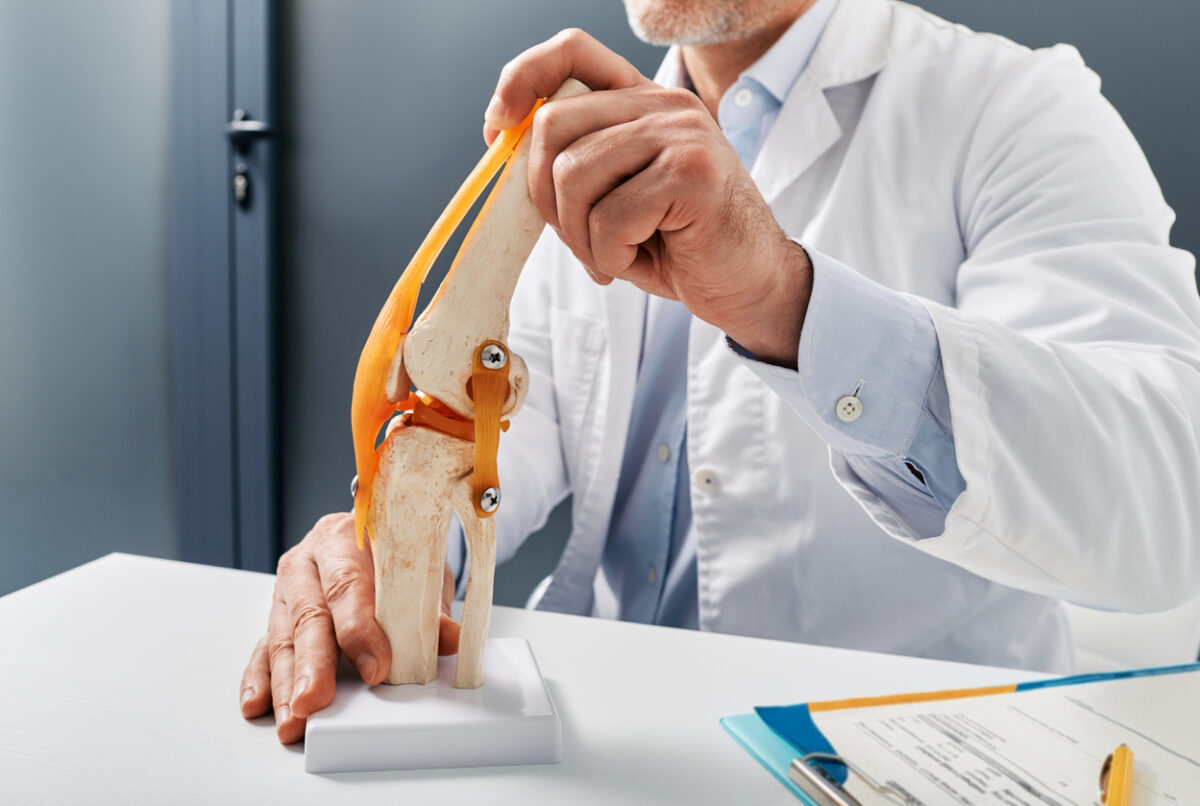Understanding Knee Joint Pain! Causes and Symptoms
Knee joint pain is a common ailment affecting people of all ages. It can be caused by a range of conditions, from injuries to arthritis. Managing this pain involves understanding its causes, symptoms, and treatment options.
Common Causes of Knee Joint Pain
The common causes of knee joint pain include osteoarthritis, which occurs due to wear and tear of the knee joint over time.
Other causes include ligament injuries, such as an anterior cruciate ligament (ACL) tear, and meniscus tears, which can result from sudden twisting movements.
Additionally, patellofemoral pain syndrome, also known as runner’s knee, can cause pain around the kneecap.
Overuse injuries, bursitis, and tendinitis are also common causes of knee joint pain. In some cases, underlying medical conditions like gout or infections can lead to knee pain as well.
Recognizing Symptoms of Knee Joint Pain
Symptoms of knee pain can include swelling, stiffness, redness, weakness, and a limited range of motion.
Pain may worsen when walking, running, or bending the knee. Some causes of knee pain may involve clicking or popping sensations, a feeling of instability, or a locking sensation.
The severity and duration of the symptoms can also vary depending on the underlying cause, such as injury, overuse, arthritis, or certain medical conditions.
Consulting a healthcare professional is advisable for proper diagnosis and treatment of knee pain.
Prevention and Maintenance of Healthy Knee Joints
Healthy knee joints are vital for mobility and comfort. By adopting a lifestyle that includes regular exercise, balanced nutrition, and preventive care, you can significantly improve the health and longevity of your knees. It’s never too early or too late to start taking care of your knee joints.
Lifestyle Modifications for Better Knee Health
Modifying certain aspects of your lifestyle can have a significant impact on the health of your knee joints. These changes can include maintaining a healthy weight, eating a balanced diet, getting plenty of sleep, and avoiding activities that can cause excessive strain on your knees. Here are major courses to improve your lifestyle for your better knee health.
Regular Exercise:
Engaging in low-impact exercises like walking, swimming, and cycling can help strengthen the muscles surrounding the knee joint and improve overall knee health.
Maintaining a Healthy Weight
Excess weight puts added stress on the knees, leading to increased risk of knee pain and injury. Maintaining a healthy weight through a balanced diet and regular exercise can reduce this risk.
Proper Footwear
Wearing supportive shoes that provide adequate cushioning and stability can help alleviate pressure on the knees and reduce the risk of knee pain and injury.
Injury Prevention
Avoiding activities that put excessive strain on the knees, using proper form during exercises, and wearing protective gear during sports can help prevent knee injuries and promote better knee health.
Balanced Diet
Consuming a diet rich in nutrients, particularly foods high in omega-3 fatty acids, such as fish and nuts, can help reduce inflammation in the knees and support overall joint health.
Regular Stretching
Incorporating regular stretching exercises, especially for the quadriceps, hamstrings, and calves, can help maintain flexibility and range of motion in the knee joint.
Adequate Rest and Recovery
Allowing sufficient time for rest and recovery between physical activities can help prevent overuse injuries and promote better knee health.
Proper Posture
Maintaining good posture, whether sitting, standing, or walking, can help distribute weight evenly and reduce unnecessary stress on the knees.
Avoiding Prolonged Sitting
Limiting prolonged periods of sitting can help prevent knee stiffness and discomfort. Taking breaks to move and stretch throughout the day is beneficial for knee health.
Listening to your Body
Paying attention to any signs of knee pain or discomfort and seeking medical advice when needed is important for early intervention and better knee health.
Essential Exercises for Preventing Knee Joint Pain
Here are some examples of exercised for preventing knee joint pain.
1. Quadriceps strengthening: Perform exercises like squats, lunges, and leg extensions to strengthen the muscles at the front of the thigh, which help stabilize the knee joint.
2. Hamstring stretches: Stretching the muscles at the back of the thigh can help prevent imbalances and reduce stress on the knee joint. Perform exercises like standing hamstring stretches or lying hamstring curls.
3. Glute strengthening: Strong glute muscles help support proper hip alignment, which in turn can alleviate stress on the knees. Include exercises like hip thrusts and glute bridges.
4. Calf stretches: Tight calf muscles can contribute to knee pain. Stretching them regularly can help maintain flexibility and reduce strain on the knee joint. Perform exercises like standing calf stretches or calf raises.
5. Balance exercises: Improving balance can enhance knee stability and reduce the risk of injury. Try practicing single-leg balance exercises or incorporating balance boards or stability balls into your routine.
6. Low-impact aerobic exercises: Engage in activities like swimming, stationary biking, or using an elliptical machine to keep the knees active and well-conditioned with minimal impact.
7. Patellar mobilization exercises: These exercises involve moving the kneecap gently to improve its alignment and reduce pain. Consult a physical therapist for proper guidance on performing these exercises.
Remember to consult with a healthcare professional before starting any exercise program, especially if you have existing knee issues or joint pain.
When to Seek Medical Advice
In some cases, knee pain can be more than just a minor nuisance. It can signal a more serious issue that requires medical intervention. There’s no need to panic every time your knee hurts, but you should know when to consult a doctor. sudden severe pain, inability to bear weight on your knee, noticeable swelling, and fever are all possible signs that you should seek medical advice.
Identifying Serious Knee Joint Pain Conditions
Properly identifying the source and nature of your knee pain is crucial for effective treatment. Pain may develop gradually over time, resulting from wear and tear, or it may erupt suddenly, due to an unexpected injury. Both can be signs of serious knee joint pain conditions such as osteoarthritis or torn ligaments. Consulting a healthcare professional is the first step to identifying these conditions.
The Role of Surgery in Knee Joint Pain Treatment
Surgery should be seen as a last resort for knee pain relief when all other nonsurgical treatments and physical therapies do not work. In fact, many serious knee joint pain conditions can be successfully managed without surgery. Procedures include arthroscopic surgery, partial knee replacement, and total knee arthroplasty. A discussion with your doctor is essential to determine your suitability for these operations.
The natural bone strength complex made from Satsuma mandarin orange
Juveriente®’s Bone Strength Complex provides you the above all 3 essential nutrients for bone health along with a Japanese bone health support food extract.
That main functional ingredient is simply an extract of a Japanese popular citrus fruit!! Needless to say, it is better to try a natural food before jumping to strong medicines. Though natural and gentle, it has garnered a lot of amazing reviews in Amazon since its launching in 2016.
If you like to try multi-vitamin supplement, how about adding the natural bone therapy fruit extract with Juveriente® Bone Strength Complex?
Please learn details in our product page.








